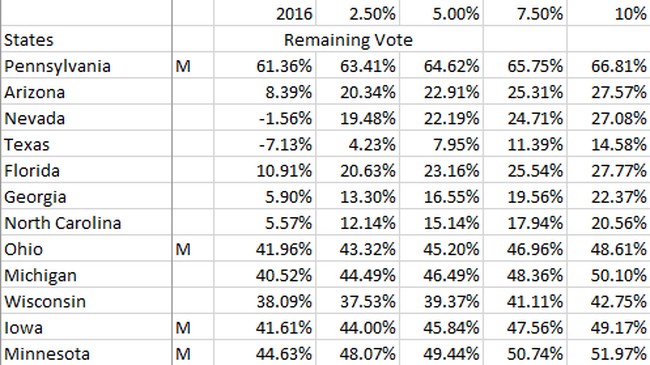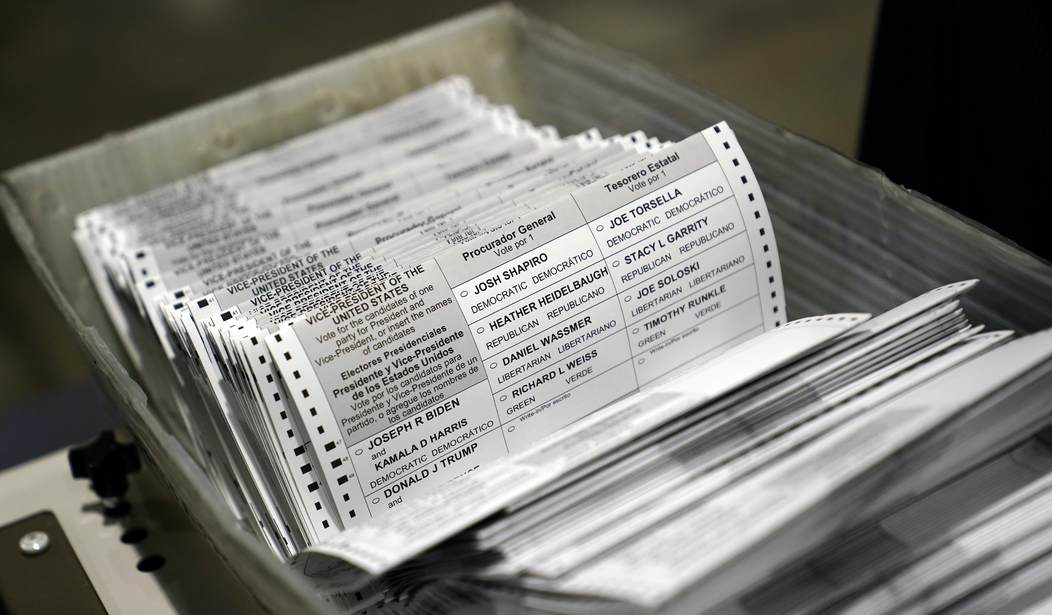I will never forget when one of my mentors in politics taught me about voter turnout. In 2008 as we waited for the ballots to be counted, he explained how the turnout would increase by 1.8% over the 2004 election and that from the modeling of the returns on the ballots being counted, what the result would be. He wrote down on a piece of paper two numbers. First was the number of total votes cast and the second was the number of votes that the candidate we were supporting would get. He was right about turn out by 72 votes and right about the votes our candidate received by 6. My mind was completely blown.
Just this last week I was talking to him about our 2020 election. My question to him: “What do you think turnout is going to be this year?”
“I have no ****ing clue,” was his response. In 2020, there’s really no way to tell what turnout is going to be, with the huge mail vote, and Coronavirus precautions.
I decided to dig into the numbers coming out of the election and as far as turnout, none of the current options of the table favor Democrats and their chances for winning certain states. In an earlier piece, I discussed the early vote returns and where we stand. This is to show how many votes are out there still to be cast.
For this analysis, I will break the 12 battleground states into three categories.
- States that Trump leads in returns.
- States that Biden leads in returns by single digits.
- States that Biden leads by double digits.

As it stands, Trump leads in returns in Texas (by 17), Georgia (by 9), Ohio (by 10), Michigan (by 3), and Wisconsin (by 8). The continuing theme from all of my articles today is that Democrats have failed to run up the score in early voting. In Texas, for instance, Republicans have turned out nearly a half-million more voters than they did in 2016, while Democrats still have another half million to go to just meet their 2016 turnout. In Texas, more votes have been returned to date than in all of 2016. Republicans have a massive 1.4 million vote lead in Texas, with Democrats only having 400,000 more voters (from 2016) to still turn out. After that 400k they have to convert other voters or expand their turnout, which seems unlikely. Even at a 7.5% increase, in turn, out which is insanely huge, and Dems won every single vote from now on, that’s still only 1.235 million votes, short of the Republican lead.
In Georgia, TargetSmart has Republicans with a 9 point lead or more than 350,000 votes. While Republican’s lead in the state does give Democrats the advantage in remaining voters, even if Dems turned out all 241,000 of their remaining 2016 vote, while Republicans didn’t add a single vote, Republicans would still carry the state. Even if TargetSmart’s party model was wrong, that would mean the fewer ballots cast by Republicans are more ballots cast by Democrats, giving Republicans a DOE advantage.
Ohio is another state in which Trump won big in 2016, that he will likely carry again in 2020. Trump won Ohio by 8.1 points, and again, Republicans lead in early returns in Ohio by 10. The difference with Ohio is there’s still a ton of votes to be cast (2.3 million) but again, according to the data, Republicans have the lions share of those with almost 1.3 million remaining. Democrats have over 120,000 less DOE votes to push. Other data shows that Biden has a slight lead in the state, but turnout will favor Republicans…. bigly.
In Michigan, Republicans have a 3 point lead in returns, topping out their lead at about 86,000 votes. Trump won the state in 2016 with just an 11,000 vote margin. Michigan Democrats have 1.15 million voters still outstanding, while Republicans have 1.074, to meet their 2016 turnout. Should the current TargetSmart lead be correct, Republicans will likely hold the state.
In Wisconsin, Republicans lead by 8 points in early returns or more than 147,000 votes in a state that Trump won by just 23,000 votes in 2016. While 38% of 2016’s vote remains to be cast, DOE voting is set to lean Trump. Democrats have another 737,000 votes to push to the polls while Republicans stand to get just 613,000. Democrats have their hands full in all of these states, where they relied heavily on mail voting turnout that didn’t materialize.
Democrats lead by just 1 point in Arizona, 3 points in Nevada, 2 points in Florida, and 5 points in North Carolina. In each of these states, The Democrat leads are less than the Republican votes remaining to turn out. Democrats, in other words, are now pushed to turn out as many voters as possible. In Arizona, Republicans have an 8 point advantage on DOE votes to turn out, a 2 point advantage in Nevada, a 6 point advantage in Florida, and a massive 15 point advantage in North Carolina. Simply put, Democrats will run out of voters to turn out before Republicans do, and they have to turn their voters out, after having told them to vote from home for months.
In the states in which Democrats have a sizeable lead, Minnesota, Iowa, and Pennsylvania, Democrats hold 13 point advantages in both Iowa and Minnesota, and a chart smashing 43 point lead in early voting in Pennsylvania. The problem is, Dems have burned through a good deal of their high propensity voters and have left the more difficult voters to push to the polls to DOE. In Minnesota, Republicans have a 14 point advantage in DOE voters, In Iowa a 17 point advantage, and in Pennsylvania a more than 35 point advantage. That means, that to hold the line, Democrats will have to push more people to the polls than Republicans, all while running out of voters to push out. Only 19% of Republicans have turned out to date in Pennsylvania. Over 54% of Democrats have.
Some may question how the data jumps so high between the 2016 numbers to the 2020, 2.5% increased turnout, it factors for that increased turnout on the new, higher 2020 registration numbers. In my opinion, Democrats struggle at this point just to push the remaining 2016 voters to the polls. I believe there’s a real possibility, they don’t make 2016 turnout in some states.














Join the conversation as a VIP Member